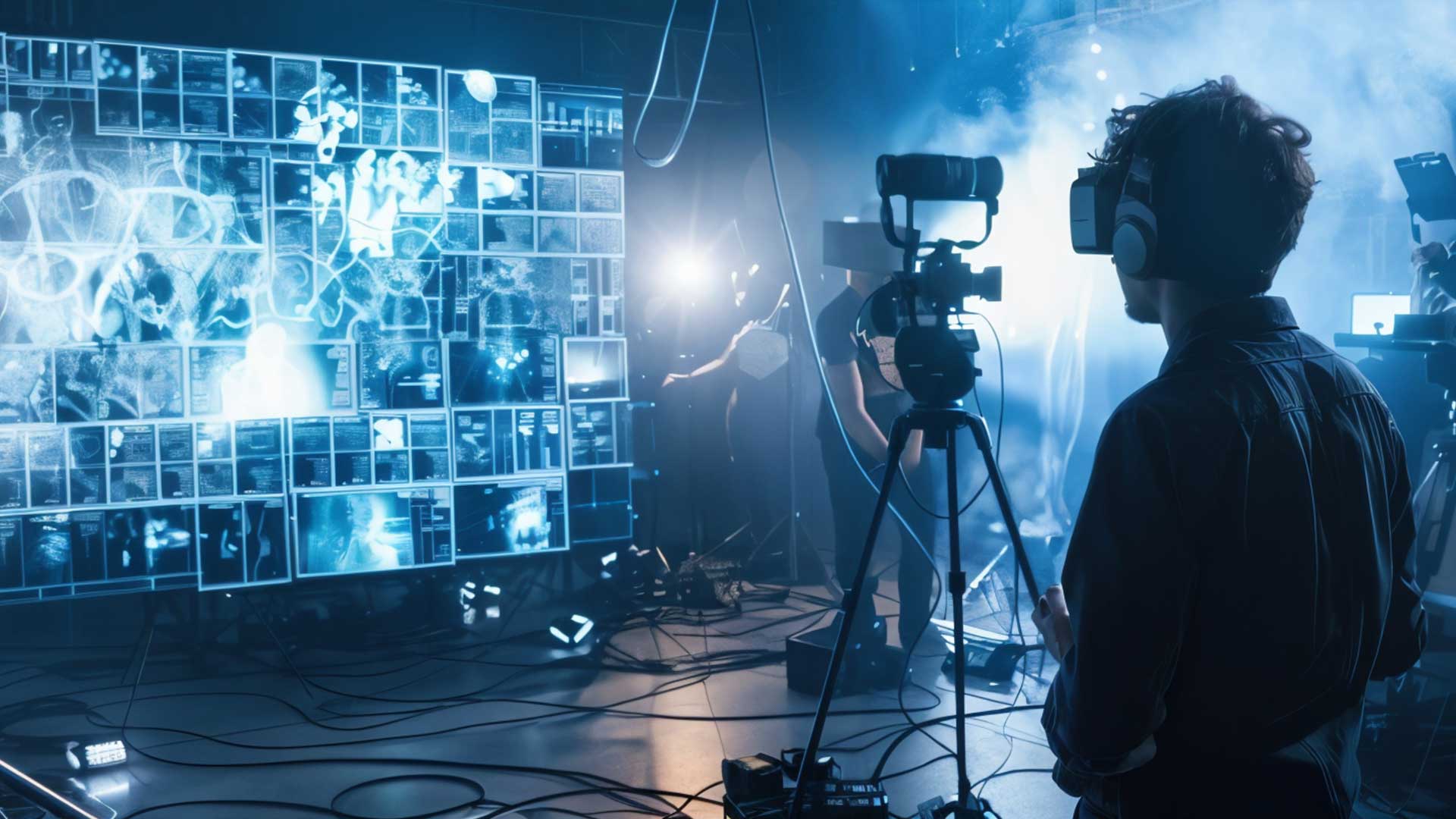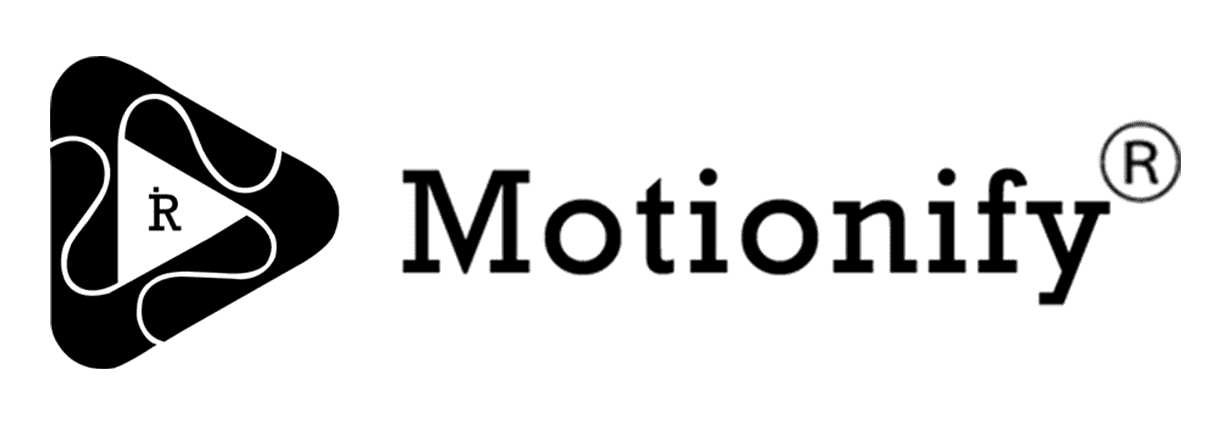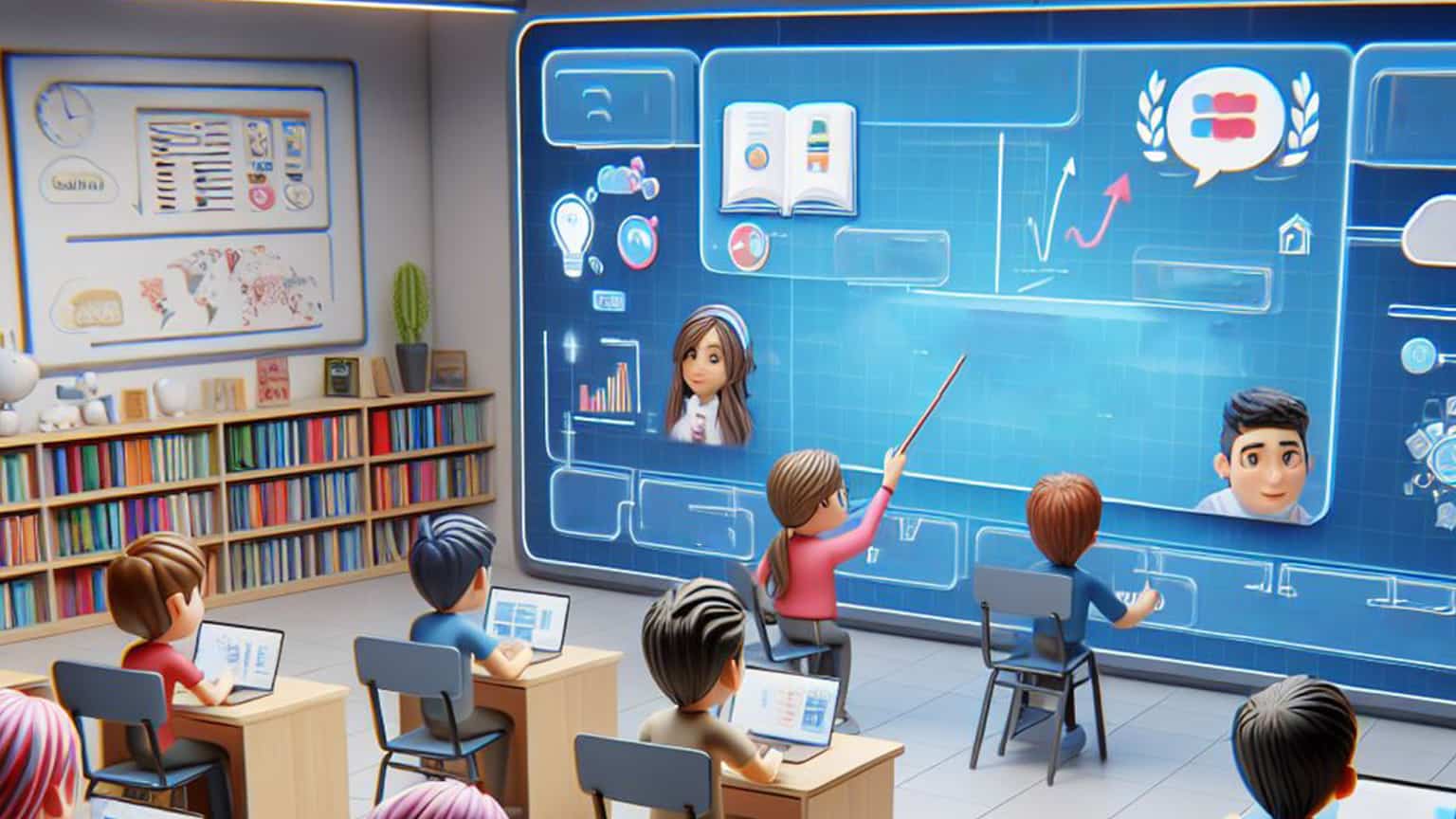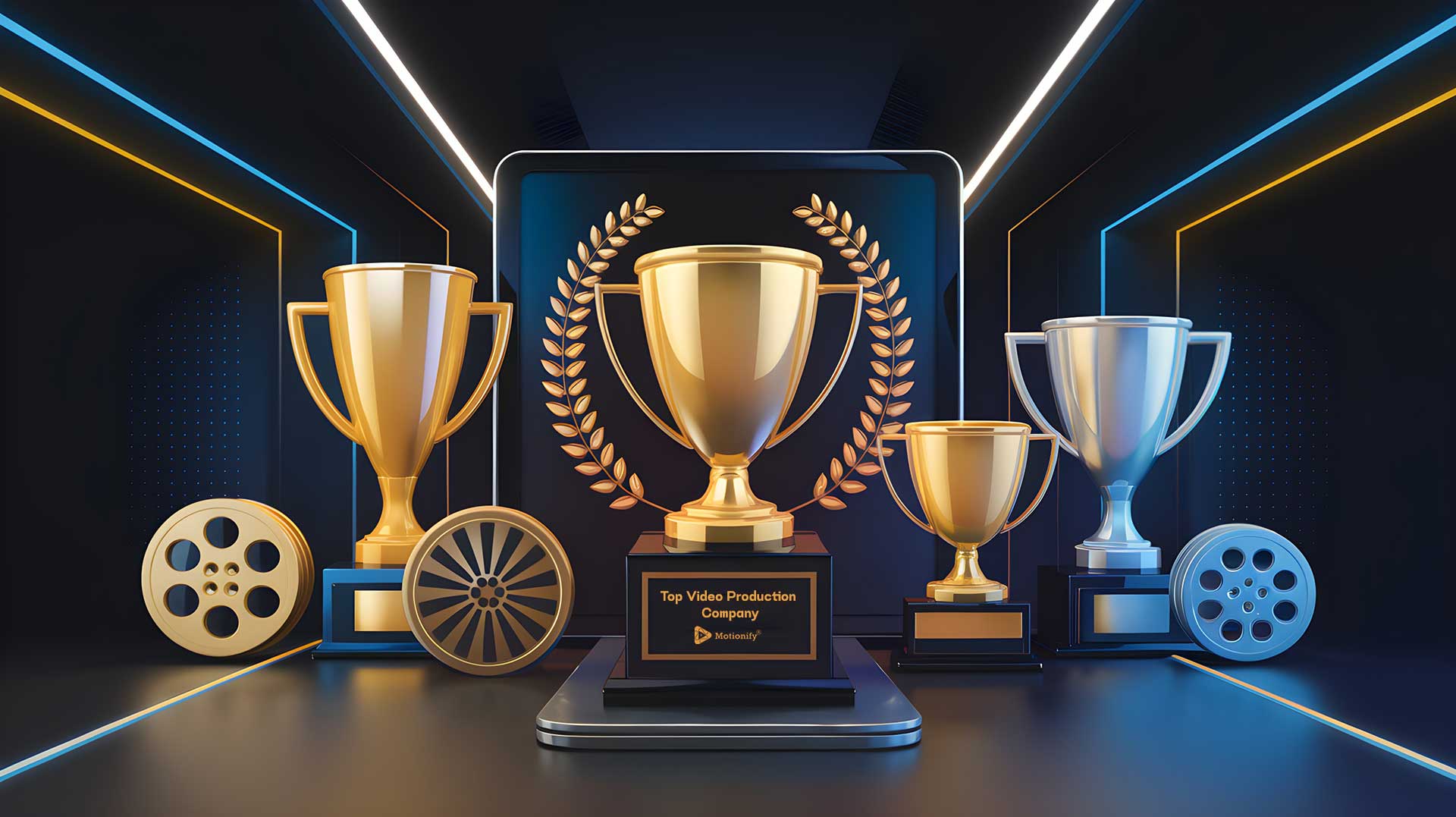
The Future of Video Production: Will AI Overtake Agencies?
In this Article
1. The Role of AI in Video Production Today
2. What Agencies Offer That AI Cannot (Yet)
3. Comparing AI vs. Agencies for Different Types of Video Projects
4. Key Advantages AI Brings to the Future of Video Production
5. The Challenges AI Faces in Replacing Agencies
6. The Future: Will AI Overtake Agencies?
7. Conclusion
8. Frequently asked Questions
Introduction
In today’s fast-paced digital landscape, video production has become a cornerstone for brands to communicate, engage, and captivate their audiences. Whether it’s a promotional video, product explainer, or high-end commercial, businesses rely on video content to convey their stories in a visually compelling way.
With the rise of artificial intelligence (AI) in various industries, video production is experiencing a revolutionary shift. AI tools are becoming increasingly popular for their ability to streamline processes, reduce costs, and produce content at scale. Automated editing, AI-generated scripts, and motion graphics are just some of the capabilities that have piqued the interest of many brands.
This raises a critical question: Can AI truly replace traditional video production agencies? As AI technology advances, we must consider the strengths and limitations of both approaches to understand the future of video production. Will AI overtake agencies, or is there room for collaboration between human creativity and machine efficiency? Let’s explore this evolving landscape.
1. The Role of AI in Video Production Today
Automation of Video Creation: AI tools for automated video editing, script generation, and motion graphics.
AI has significantly transformed the video production process by automating many traditionally manual tasks. Here’s how AI tools streamline various aspects of video creation:
1. Automated Video Editing
AI-driven platforms can now automatically cut, splice, and organize raw footage based on pre-set parameters or style preferences. These tools use machine learning algorithms to identify the best shots, transitions, and pacing to create a polished video without manual editing. Examples include:
- Magisto: Uses AI to analyze video content, select the best parts, and add appropriate transitions and music.
- Adobe Sensei: Automates routine editing tasks like color correction, clip tagging, and even video segmenting for different platforms.
2. Script Generation
AI can assist in generating scripts for explainer videos, ads, or even long-form content. Using natural language processing (NLP), AI can create scripts based on a brand’s input or target audience, significantly speeding up the creative process. Tools such as:
- Copy.ai and Jarvis: AI-based content writers that can draft video scripts based on prompts, keywords, or specific goals.
- ChatGPT can also assist in ideating, writing, and revising scripts for videos across genres.
3. Motion Graphics Automation
Creating motion graphics can be labor-intensive, but AI tools are now helping automate the process by generating animations that match a video’s style and pacing. These tools often allow users to input basic design elements, and AI will handle the motion design based on predefined rules.
- Runway ML: Provides tools for creating stunning animations with AI-generated visuals and automated effects.
- Lumen5: Transforms blog posts or articles into animated videos, incorporating motion graphics and dynamic text overlays.
Speed and Efficiency: How AI drastically reduces production time.
AI has revolutionized video production by streamlining processes that traditionally took days or even weeks to complete. Here’s how AI speeds up the production pipeline:
1. Automated Video Editing
Manual video editing requires extensive time for selecting clips, adjusting transitions, syncing audio, and correcting colors. AI-powered tools drastically reduce this process by:
- Intelligent Scene Selection: AI algorithms can automatically identify the best scenes based on quality, subject, or movement, quickly trimming down raw footage.
- Instant Color Correction & Grading: AI tools like Adobe Sensei analyze scenes and automatically adjust lighting and color, optimizing each frame instantly.
- Auto-Matching Music: AI can match music and transitions to video pacing, ensuring seamless audio-visual sync in record time.
2. Script Writing and Storyboarding
Creating a script and storyboard can take days of back-and-forth revisions. AI tools speed this up by:
- Auto-Script Generation: Using tools like Copy.ai or Jarvis, content creators can generate a base script in seconds by feeding in prompts or key information. This speeds up the ideation phase and allows quicker feedback loops.
- Visual Storyboarding: AI platforms can automatically generate a storyboard based on the script, offering visual representations and shot suggestions to bring ideas to life faster.
3. Motion Graphics and Animation
Motion graphics and animations often require hours of frame-by-frame work. AI can fast-track this by:
- Automated Motion Design: Tools like Runway ML and After Effects AI plugins allow users to input basic design elements, and the AI takes over by creating fluid motion graphics with minimal input.
- Pre-Built Animation Templates: AI-powered tools provide a library of pre-animated templates that adapt to your specific content, eliminating the need to start animations from scratch.
4. Real-Time Feedback and Iterations
AI not only accelerates production but also optimizes the revision process by offering:
- Instant Feedback: AI-driven tools analyze video performance in real-time, identifying pacing, emotion, and audience engagement, providing creators with actionable feedback faster than manual reviews.
- Auto-Adjustments: Based on this feedback, AI can automatically make suggested adjustments to pacing, content flow, and visual effects.
Cost-Effectiveness: AI’s role in providing budget-friendly solutions for brands.
AI-driven video production offers significant cost advantages, making high-quality video content accessible to businesses of all sizes. Here’s how AI contributes to cost-effectiveness:
1. Reduced Labor Costs
Traditional video production requires a large team—directors, editors, animators, scriptwriters, and more—driving up costs. AI tools can automate many of these roles, resulting in:
- Fewer Hires: AI can handle tasks like editing, motion graphics, and color correction, eliminating the need for multiple professionals.
- Efficient Use of Time: By speeding up labor-intensive processes, AI tools allow smaller teams to accomplish more in less time, reducing overall labor costs.
2. Affordable Creative Solutions
AI offers brands a way to produce creative, visually appealing content without breaking the bank:
- Pre-Built Templates: AI-powered platforms provide a variety of customizable templates for everything from animation to video design, reducing the need for extensive, costly custom work.
- Automatic Scriptwriting: AI-generated scripts streamline the creative process, cutting down on hours (and costs) that would typically be spent by a copywriter or creative team.
3. Lower Production Expenses
By using AI in video production, brands can save on key production expenses that would otherwise strain budgets:
- Fewer Revisions: AI tools deliver real-time feedback and performance analysis, helping creators get the content right the first time, reducing the need for costly rounds of revisions.
- Reduced Post-Production Costs: AI-powered editing tools, color grading, and audio syncing remove the need for manual, time-consuming post-production work, driving down costs significantly.
4. Scalable Solutions for Businesses
For brands producing large volumes of content or running multiple campaigns, AI can offer scalability without significantly increasing costs:
- Batch Production: AI’s ability to automate processes like editing and animation allows for simultaneous creation of multiple videos, providing a more cost-efficient way to scale production.
- Consistency in Quality: With AI, brands can ensure a consistent level of quality across various video projects without requiring additional manpower or resources.
5. More Cost-Efficient Use of Time
Time is money, and AI drastically reduces time spent on production:
- Faster Turnaround: Quicker production times mean businesses can get content to market faster, reducing the overall cost of delayed launches or extended project timelines.
- Automated Repetitive Tasks: By handling repetitive tasks such as keyframe animation or media sorting, AI allows brands to get more done in less time, without additional financial resources.
6. Optimized Budget Allocation
By leveraging AI tools, brands can focus their budget on high-priority areas:
- Strategic Spending: With AI managing routine tasks, brands can allocate their budget to higher-value aspects of video production, such as strategic planning, storytelling, or marketing the final content.
- Long-Term Savings: The more AI tools are integrated into the workflow, the more cost-efficient video production becomes over time, with the potential for significant long-term savings.
AI Platforms and Tools: Examples of current AI-driven video tools (Lumen5, Animoto, etc.)
As artificial intelligence reshapes video production, a growing number of platforms and tools are harnessing AI to automate and simplify the process. Here are some key AI-driven video tools currently making waves in the industry:
1. Lumen5
- Overview: Lumen5 is an AI-powered video creation platform designed for marketers. It transforms text-based content like blog posts, articles, or social media updates into engaging videos by automatically matching the text with relevant visuals, animations, and transitions.
- Key Features:
- AI-driven content creation from text input
- Automated video editing and scene transitions
- Extensive media library with stock footage and images
- Customizable video templates
2. Animoto
- Overview: Animoto is a user-friendly, drag-and-drop AI video maker that helps create professional-looking videos quickly. It’s popular for its simplicity and is widely used by marketers and small businesses to produce social media content, promo videos, and explainer videos.
- Key Features:
- Drag-and-drop interface with AI-assisted editing
- Automated video formatting for social platforms
- Pre-built templates for faster video creation
- Integration with stock photo and music libraries
3. Magisto
- Overview: Magisto, owned by Vimeo, uses AI to analyze your uploaded footage, images, and music, then automatically edits them into a polished, professional video. The platform is designed to help users with little to no video editing experience create effective marketing videos.
- Key Features:
- AI-driven video editing and storytelling
- Pre-made editing styles and themes
- Automated footage analysis (detects emotion, action, and importance)
- Integration with Vimeo for distribution and hosting
4. Pictory
- Overview: Pictory is an AI-powered tool that converts long-form content (like webinars, podcasts, or articles) into short, shareable videos. It’s especially useful for creating marketing clips or snippets for social media.
- Key Features:
- AI-driven video summaries and highlights
- Automatic captioning and subtitling
- Text-to-video transformation
- Stock footage and voice-over options
5. Deepbrain AI
- Overview: Deepbrain AI offers a platform for creating AI-generated virtual human presenters, enabling companies to produce interactive and engaging videos at scale. It’s particularly useful for businesses looking to automate product demos, explainer videos, and customer service.
- Key Features:
- AI avatars for human-like video presenters
- Automated voice synthesis and script integration
- Realistic facial expressions and gestures
- Multi-language support
6. Synthesia
- Overview: Synthesia is an AI platform that allows users to create videos with AI avatars. Users can choose from pre-built avatars or create custom ones, and then type a script that the AI avatar will deliver in the video.
- Key Features:
- AI avatars that deliver scripts in a lifelike manner
- Multilingual video creation (supports over 60 languages)
- Pre-designed templates for corporate training, marketing, and e-learning
- Easy updates for frequently changing content (like onboarding or product tutorials)
7. Designs.ai
- Overview: Designs.ai is an all-in-one creative platform that includes an AI video maker called Videomaker. It enables users to generate videos quickly by combining text input, AI-powered scene selection, and royalty-free visuals.
- Key Features:
- AI-assisted video creation from text scripts
- Large media library with free visuals and audio
- Automatic scene transitions and animations
- Customizable templates for different industries and purposes
8. Wisecut
- Overview: Wisecut is an AI video editing tool that uses machine learning to automatically trim footage, add music, and create seamless video cuts. It is especially helpful for YouTubers and content creators looking to simplify the editing process.
- Key Features:
- AI-based automatic video trimming and editing
- Automatic subtitle generation
- Integration with royalty-free music
- AI-powered scene detection and storytelling
9. Runway ML
- Overview: Runway ML is an AI-driven platform for content creators looking to add advanced effects, 3D animations, and motion graphics to their videos. It’s widely used by creators in film, music videos, and social media content.
- Key Features:
- AI-generated motion graphics and video effects
- 3D object rendering and animation
- Integration with professional editing software
- Real-time collaboration tools for teams
10. RawShorts
- Overview: RawShorts is a text-to-video AI tool that converts written content into animated explainer videos. It uses natural language processing (NLP) to interpret the script and pair it with relevant visuals.
- Key Features:
- NLP-powered text-to-video conversion
- Library of animated assets and templates
- Drag-and-drop video editing
- Voice-over and subtitle support
2. What Agencies Offer That AI Cannot (Yet)
Human Creativity and Storytelling: The importance of emotional connection, narrative flow, and cultural nuance.
While AI technology has made remarkable strides in automating certain aspects of video production, it still struggles to match the nuanced creativity that human storytellers bring to the table. Video production, at its core, is not just about the technical assembly of visuals and sound — it’s about crafting compelling stories that resonate with the audience on a deep emotional level. Here’s why human creativity remains irreplaceable in the world of video production:
1. Emotional Connection
Human filmmakers and writers have an innate ability to tap into emotions, creating stories that evoke joy, empathy, excitement, or even sadness. These emotions form the backbone of a memorable video, whether it’s a heartfelt commercial, an inspiring corporate message, or a narrative film. While AI can recognize patterns in data, it lacks the lived experiences and emotional intelligence required to infuse stories with heart. Human creators understand how to use timing, tone, and visuals to make audiences feel connected to the content.
2. Narrative Flow
A great video, whether it’s a 30-second promotional clip or a full-length documentary, hinges on the flow of its narrative. Human storytellers have an intuitive sense of pacing, rising action, and resolution, knowing when to build tension and when to offer relief. They can structure stories in ways that keep audiences engaged and invested. Narrative flow requires creativity, a keen understanding of plot dynamics, and an ability to make on-the-fly decisions, all areas where AI remains limited.
3. Cultural Nuance
Storytelling is deeply rooted in cultural contexts, and these nuances are critical for videos meant to target specific demographics or regions. A narrative that resonates with one culture might not have the same impact on another, and understanding these differences requires sensitivity, research, and sometimes a lifetime of lived experience. Human creators bring an awareness of social norms, values, and subtleties that AI simply can’t replicate.
4. Artistry and Aesthetic Choices
Beyond logic and algorithms, video production is an art form. Every frame, cut, and sound must work in harmony to create a beautiful final product. This process requires aesthetic decisions that are subjective and often driven by instinct. Human creatives are able to experiment with unconventional ideas, take risks, and push the boundaries of visual storytelling in ways that AI currently cannot.
5. Personalization and Client Collaboration
When it comes to working with clients, human agencies excel at collaboration, flexibility, and personalized service. An agency’s creative team can actively listen to client feedback, ask clarifying questions, and tailor the final video to reflect the brand’s voice and values. AI, while efficient, is still far from achieving the kind of dynamic, iterative process that involves real-time collaboration and human empathy.
Customization and Flexibility: Tailoring content to client-specific needs, audience, and brand vision.
One of the biggest advantages that human-led agencies have over AI-driven video production tools is their ability to customize content to fit the unique needs of each client, aligning with the client’s brand vision, audience preferences, and specific goals. While AI can automate certain tasks, it often operates on standardized frameworks and lacks the flexibility required to adapt to the nuances of each project. Here’s why customization and flexibility are key in video production and how human agencies excel in this area:
1. Deep Understanding of Client Vision
A successful video project starts with a deep dive into the client’s brand identity, values, and long-term objectives. Human-led agencies take the time to understand not just what the client wants, but why they want it. They work collaboratively with the client to translate abstract ideas into a visual narrative that perfectly aligns with the brand’s vision. AI, on the other hand, can generate content based on predetermined templates or data inputs but lacks the emotional intelligence to truly grasp the subtleties of brand identity and messaging.
2. Audience-Centric Storytelling
Tailoring video content to resonate with a specific audience is crucial for ensuring that the message connects effectively. Human video producers and agencies bring an intuitive understanding of how different demographics engage with content, considering factors such as age, interests, location, and cultural background. Human creatives can tweak messaging, visuals, and tone to cater directly to the audience’s expectations and preferences.
3. Adaptability to Changing Client Needs
In the world of video production, client needs often evolve throughout the creative process. A client may decide to shift their messaging or introduce new elements based on changing market dynamics or internal feedback. Human agencies are equipped to handle these changes with agility and adaptability, working closely with clients to revise the script, storyboard, or visual elements to better align with the updated vision. AI tools, on the other hand, are often rigid in their approach, making it difficult to pivot mid-project.
4. Personalized Branding and Visual Style
No two brands are alike, and video production must reflect each brand’s unique personality and style. Human agencies are capable of producing a wide range of video types — from sleek, high-tech motion graphics for a cutting-edge tech company to warm, emotional live-action videos for a family-oriented business. The ability to personalize every aspect of the video, from color schemes to music choices, ensures that the final product is a perfect fit for the brand’s identity. While AI tools can offer some level of customization, they typically rely on pre-built templates that may not fully capture the essence of a brand.
5. Flexibility Across Different Formats and Platforms
A significant advantage of working with a human-led agency is the flexibility they offer in creating videos tailored for different platforms, formats, and purposes. Whether it’s a 15-second social media ad, a full-length product demo, or a video optimized for a landing page, human agencies can ensure that each format fits the platform’s requirements while maintaining the core message and quality. AI tools, while efficient, often struggle with adapting content for multiple platforms without sacrificing creative integrity.
6. Hands-On Client Collaboration
The relationship between an agency and its client is built on trust, communication, and collaboration. Human creatives engage in ongoing dialogue with the client, adjusting and fine-tuning the project in real time. This collaborative environment allows for constant feedback, ensuring that the final product not only meets but exceeds the client’s expectations. AI-driven tools, however, often lack the capacity for real-time collaboration, limiting the depth of communication and customization that a client may require.
Hands-On Collaboration: Real-time feedback, collaboration, and brainstorming with professionals.
One of the key differentiators of agency-led video production is the hands-on collaboration between clients and professionals. This dynamic working relationship fosters creativity, ensures the alignment of visions, and results in a product that fully captures the client’s goals. Here’s why hands-on collaboration is invaluable in video production and how it contrasts with AI-led processes:
1. Ongoing Dialogue and Real-Time Feedback
When working with a human-led agency, clients are active participants in the production process. From the initial concept meeting to the final delivery, there’s constant communication that ensures every creative decision is in line with the client’s objectives. Real-time feedback during script development, storyboarding, and editing allows for immediate adjustments, reducing misunderstandings and keeping the project on track.
2. Collaborative Brainstorming for Unique Ideas
Human agencies thrive on brainstorming sessions that combine the client’s industry insights with the agency’s creative expertise. This collaborative environment can spark unique ideas that neither party may have considered on their own. By pooling resources and knowledge, human creatives can introduce new approaches to visual storytelling, brand representation, or audience engagement.
3. Personalized Iterations and Fine-Tuning
In the production process, there are often multiple revisions and refinements. Human-led agencies have the flexibility to accommodate the client’s specific requests at every stage—whether it’s adjusting the color grading, modifying animations, or altering the soundtrack. This hands-on collaboration ensures that every detail is perfected and matches the client’s vision.
4. Alignment of Vision and Values
Human creatives invest time in understanding the broader vision and values of the brand. This deeper connection to the brand’s purpose allows for better collaboration, ensuring that the final product is not just visually appealing but also aligns with the core messages the brand wants to communicate. This kind of emotional intelligence and alignment is often missing in AI-driven processes.
5. Flexibility and Adaptability to Changing Needs
Projects can evolve, and so can the client’s needs. Human agencies are agile enough to pivot based on real-time feedback and changes in direction. Whether it’s a change in the product being showcased or a shift in market strategy, professional creatives can quickly adapt to these changes without derailing the overall project.
6. Fostering a Partnership Rather Than a Transaction
Hands-on collaboration builds a relationship of trust and partnership between the client and the agency. It’s not just about delivering a video; it’s about co-creating something meaningful that achieves the desired impact. Clients are more than customers—they are partners in the creative journey, with the agency acting as an extension of their vision and mission.
Expertise in Large-Scale Productions: Managing complex projects such as live-action shoots, commercials, and corporate videos.
One of the defining advantages of working with human-led video production agencies, like Motionify, is their expertise in managing large-scale productions. While AI-driven tools excel at automating certain tasks, large-scale, high-stakes productions such as live-action shoots, commercials, and corporate videos require meticulous planning, creativity, and human intervention. Here’s how agencies manage these complex projects:
1. End-to-End Project Management
Agencies have experience in overseeing every phase of production from pre-production planning, scheduling, and budgeting to post-production editing and delivery. They can handle the complexities involved in multi-location shoots, large crews, and diverse logistics, ensuring everything runs smoothly.
2. Professional Network of Specialists
Large-scale productions require collaboration across different disciplines—directors, cinematographers, set designers, lighting technicians, editors, and more. Agencies have long-standing relationships with top professionals in the field, allowing them to bring together the best team for each project.
3. Logistical Mastery
Coordinating large productions requires managing many moving parts—permits, equipment rentals, location management, and talent scheduling. Agencies excel in handling these logistical details, ensuring that all elements come together on time and within budget.
4. Custom Solutions for Unique Needs
Every large-scale production has unique challenges, whether it’s working in challenging environments, managing large crews, or adhering to strict brand guidelines. Agencies provide custom solutions for these projects, leveraging their experience to anticipate issues and offer creative ways to achieve the desired outcome.
5. Handling High-Quality Equipment
Large-scale productions often require specialized, high-end equipment, including cinema-grade cameras, complex lighting setups, sound gear, and drones. Agencies are well-versed in handling such equipment, ensuring that the final product is visually impressive and technically polished.
6. Real-Time Problem Solving
During large productions, unforeseen challenges often arise—whether it’s weather disruptions, equipment malfunctions, or unexpected changes in the script. Agencies are skilled in thinking on their feet and finding quick solutions without compromising the quality or timeline of the production.
7. High-Level Creative Direction
Managing complex projects requires not only technical expertise but also a strong creative vision. Agencies bring a cohesive creative direction that guides the project, ensuring that all elements—from the script and visual style to the editing and post-production—align with the client’s goals and brand identity.
8. Compliance with Industry Standards and Legalities
For live-action commercials or corporate videos, agencies are well-versed in the legal and regulatory aspects of large-scale productions. This includes securing the necessary rights and releases for talent, locations, and music, as well as ensuring compliance with advertising standards and industry-specific regulations.
9. Post-Production Expertise
Once filming wraps, the work is far from over. Agencies provide advanced post-production services, including editing, color grading, sound design, motion graphics, and more, ensuring that the final video is polished and ready for distribution across any platform.
3. Comparing AI vs. Agencies for Different Types of Video Projects
Simple, Repetitive Videos: Social media content, explainer videos, product demos, etc. (Where AI excels).
AI shines when it comes to producing simple, repetitive video content that doesn’t require a high level of creative complexity. Here’s how AI-driven tools excel in these areas:
1. Social Media Content
AI tools can generate engaging social media videos quickly, perfect for platforms like Instagram, TikTok, and Facebook. These tools can automate tasks such as video cropping, adding subtitles, or generating dynamic transitions, making it easy to create on-brand, eye-catching content in bulk.
2. Explainer Videos
AI excels at creating straightforward explainer videos, where the emphasis is on conveying a clear message. Using pre-set templates, AI tools can automate the process of adding motion graphics, text overlays, and animations to break down complex ideas into digestible content.
3. Product Demos
AI is great for producing product demo videos where the focus is on showcasing features, functionalities, or step-by-step guides. AI-driven video creation platforms can streamline this process by generating template-based videos, ensuring consistency in branding and presentation.
Creative, Complex Productions: Commercials, brand stories, and high-end corporate projects (Where agencies shine).
While AI excels in automating simple, repetitive video tasks, creative agencies bring the human touch needed for complex, high-end productions. These are the types of projects where agencies demonstrate their true value:
1. Commercials
Producing a compelling commercial often involves intricate storytelling, emotional resonance, and high production value. Agencies bring together directors, cinematographers, writers, and designers to create visuals and narratives that align with the brand’s vision. This level of creativity, combined with technical expertise, cannot be replicated by AI alone.
2. Brand Stories
Telling a brand’s story requires a deep understanding of the company’s mission, culture, and audience. Agencies specialize in crafting personalized narratives that build connections between the brand and its customers. The subtlety of emotional appeal, cultural nuance, and strategic messaging is something AI struggles to emulate.
3. High-End Corporate Projects
Corporate videos often require a more sophisticated approach, with polished visuals, expert interviews, and carefully crafted messaging. Agencies have the experience to handle large-scale projects that involve multiple stakeholders, complex logistics, and high production standards.
In short, agencies excel at producing content that requires human creativity, strategic thinking, and collaboration. For commercials, brand stories, and complex corporate videos, agencies provide the custom-tailored expertise needed to deliver high-quality, impactful content.
Use Cases for Hybrid Approaches: How AI and agencies can complement each other for certain projects.
In many cases, AI and agencies don’t need to compete—they can actually complement each other. A hybrid approach that leverages the strengths of both AI-driven tools and human expertise can optimize video production, leading to faster, cost-effective results without compromising on creativity or quality. Here are some key use cases where this combination shines:
1. Content Repurposing and Localization
- AI Strengths: AI tools can automatically repurpose a master video into multiple formats—like transforming a 60-second ad into shorter clips for social media, resizing videos, and even translating or subtitling for different languages and regions.
- Agency Expertise: Agencies can ensure that the localized content maintains cultural nuance and emotional appeal. They tailor the narrative or tone to fit each region’s audience, avoiding generic messaging.
Use Case: A global brand wants to create a commercial and repurpose it for various regions. AI can handle the technicalities of resizing and translation, while the agency ensures each version resonates with the respective target market.
2. High-Volume, Low-Cost Content Production
- AI Strengths: AI excels at generating and editing simple, repetitive videos in high volumes, such as product demos, social media clips, and explainer videos. AI-powered tools can quickly create multiple versions or iterations of a single idea.
- Agency Expertise: Agencies ensure that the creative direction aligns with the brand’s vision and that each piece feels unique and on-brand, preventing the content from becoming overly mechanical or sterile.
Use Case: A company needs to produce hundreds of product demonstration videos for their online store. AI can generate the base videos, while the agency reviews and polishes key videos to add creative flair where needed.
3. Pre-Production Automation, Creative Direction by Agencies
- AI Strengths: AI tools can streamline pre-production tasks like script generation, concept visualization (storyboarding), and even motion graphics prototyping. This allows agencies to fast-track the planning phase and focus on refining the creative elements.
- Agency Expertise: Agencies take over from where AI leaves off, refining the AI-generated script or storyboard to add human creativity, emotional nuance, and a more polished flow.
Use Case: For an explainer video, an AI tool can generate a first draft of the script and visuals, cutting down the brainstorming time. The agency then revises the script to ensure that it communicates the brand message effectively, injecting personality and appeal.
4. Post-Production Efficiency with Creative Input
- AI Strengths: AI speeds up post-production tasks, such as auto-editing footage, adding transitions, or enhancing video quality with color correction and sound synchronization.
- Agency Expertise: Agencies provide the final touches by curating the AI-generated edits, ensuring that the emotional tone is consistent and adding any advanced effects or custom animations.
Use Case: After a live-action corporate video shoot, AI can assist with quick edits, while the agency steps in to refine the pacing, enhance storytelling, and apply any intricate effects for a cinematic feel.
5. Data-Driven Optimization with Creative Strategy
- AI Strengths: AI can analyze audience data, predict video performance, and make recommendations on length, style, or format. AI tools can also personalize video content based on user behavior.
- Agency Expertise: Agencies use AI insights to refine the creative strategy, ensuring that data-driven decisions align with brand objectives, audience behavior, and creative direction.
Use Case: An agency uses AI to determine the most effective video format for a new product launch. They then build a creative strategy around those insights, blending data with compelling storytelling for maximum engagement.
4. Key Advantages AI Brings to the Future of Video Production
Scalability: AI’s ability to handle a large volume of repetitive tasks efficiently.
One of AI’s standout advantages is its ability to scale production by handling large volumes of repetitive tasks with speed and accuracy. Whether it’s batch-editing thousands of product videos or automating subtitling across multiple languages, AI tools can streamline the entire process, eliminating the need for human intervention in mundane tasks.
Key Examples:
- Batch Video Editing: AI can apply uniform edits, effects, or branding elements to hundreds of videos in minutes, which is particularly useful for e-commerce product showcases or tutorials.
- Automated Translations/Subtitles: AI can quickly generate subtitles for videos in various languages, enhancing accessibility and international reach.
- Template-Based Content: AI tools can automate the creation of social media videos, swapping out text, images, and other assets while maintaining consistent branding.
This scalability ensures businesses can maintain a steady stream of content without the need for additional labor, resulting in faster turnaround times and cost savings.
AI-Driven Personalization: Real-time data integration and content customization for specific audience segments.
AI excels in analyzing real-time data and personalizing video content to specific audience segments. By integrating user behavior data and preferences, AI can dynamically alter video content to cater to different demographics, regions, or even individual viewer preferences.
Personalization Examples:
- Dynamic Video Ads: AI can adjust elements like product recommendations, text overlays, or calls to action in real-time based on the viewer’s browsing history, location, or preferences.
- Interactive Videos: AI can tailor content depending on user interactions, creating a unique viewing experience that adapts based on choices or inputs from the audience.
- Targeted Campaigns: AI can optimize video content delivery by predicting what format, length, or style works best for a particular audience, ensuring higher engagement and conversion rates.
AI-driven personalization is particularly useful for marketing campaigns, e-commerce, and customer engagement, as it allows brands to speak directly to individual viewers and create a more impactful experience.
AI Innovations on the Horizon: Potential advancements in AI creativity, scriptwriting, and predictive analytics.
AI technology is continuously evolving, and its future holds exciting innovations in creative fields, particularly in scriptwriting, predictive analytics, and more advanced content generation. As machine learning algorithms improve, we may see AI contributing more to the creative process itself, moving beyond automation to true ideation and storytelling.
Key Potential Innovations:
- Creative Scriptwriting: AI tools may soon be able to craft entire narratives or dialogue with greater emotional depth, helping writers brainstorm, explore plotlines, and create more human-like characters and dialogue.
- Enhanced Predictive Analytics: AI could further analyze audience data to predict the success of video content before production begins, allowing creators to fine-tune their approach based on likely viewer responses.
- AI-Generated Visuals: Future advancements could lead to AI tools generating highly realistic 3D models, animations, or even live-action deepfakes that are indistinguishable from human-made content, dramatically reducing the cost and time associated with production.
With these advancements, the boundary between human creativity and AI-driven content generation will blur, allowing brands and agencies to leverage AI for even more sophisticated, targeted, and creative video productions.
5. The Challenges AI Faces in Replacing Agencies
Lack of Emotional Intelligence: AI’s struggle to capture the emotional depth and creativity that humans bring.
While AI excels in speed, efficiency, and scalability, it falls short when it comes to emotional intelligence and creativity. AI-generated videos often lack the emotional depth and subtlety that human creators bring to the table. Storytelling is at the heart of effective video production, and weaving in emotional nuances that resonate with the audience requires a human touch.
Key Challenges for AI:
- Limited Empathy: AI struggles to understand and portray complex emotions or cultural sensitivities in a meaningful way.
- Nuanced Storytelling: Effective storytelling relies on emotional arcs, humor, tension, and subtle visual cues that AI can’t yet fully replicate.
- Relating to Audiences: Human creators can draw on personal experiences and cultural insights, something AI currently cannot emulate, leading to less relatable or inspiring content.
Limited Customization: AI’s reliance on templates and its inability to fully understand a brand’s unique vision.
While AI video production tools can create content quickly, they often rely on pre-built templates and algorithms, leading to limited customization options. This template-based approach can prevent AI from fully capturing a brand’s unique identity, tone, and vision. Every brand has distinct values, stories, and goals that a one-size-fits-all AI template can’t always accommodate.
Challenges for AI in Customization:
- Brand Nuances: AI may struggle to incorporate specific brand colors, voice, and messaging in a way that feels authentic and on-point.
- Visual Aesthetics: AI-generated visuals may lack originality or distinctiveness, leading to repetitive content that fails to differentiate the brand.
- Tone and Messaging: A brand’s unique tone, especially for highly specialized industries, may not be easily captured by an AI system relying on generalized content creation models.
Collaboration and Human Insight: The value of professional interaction, brainstorming, and back-and-forth creative input.
One of the biggest advantages of working with human video production agencies is the collaboration process. Creative professionals bring insights, experiences, and intuition that AI simply cannot match. The back-and-forth exchange of ideas, brainstorming, and problem-solving between a client and creative team allows for more innovative, flexible, and tailored outcomes.
Benefits of Human Collaboration:
- Creative Brainstorming: Human creatives bring new ideas to the table, adapting to feedback in real-time and often taking projects in unexpected, exciting directions.
- Intuitive Adjustments: Professionals can read between the lines of client feedback and make adjustments that align with the client’s goals, even when not explicitly stated.
- Problem-Solving: Complex challenges that arise during production—whether logistical or creative—are often best solved by human ingenuity, especially in high-stakes, large-scale projects.
6. The Future: Will AI Overtake Agencies?
The Role of AI as a Tool, Not a Replacement: How AI can enhance agency work, not replace it.
AI in video production is best viewed as a powerful tool that enhances agency capabilities, rather than replacing them. By automating time-consuming tasks like video editing, script generation, and motion graphics, AI allows agencies to focus on the creative aspects that require human ingenuity. It can streamline the production process, reduce costs, and increase efficiency, but the vision and creativity behind a compelling video still require human intervention.
How AI Enhances Agency Work:
- Speed: AI can handle tasks like initial drafts, quick edits, and repetitive processes in a fraction of the time.
- Efficiency: With AI automating routine work, creative teams can concentrate on developing high-level concepts and fine-tuning the project.
- Consistency: AI tools ensure consistency in style, color correction, and templates, allowing humans to refine the narrative and emotional engagement.
The Evolution of Agencies: How agencies are adopting AI to streamline processes and improve efficiency.
Agencies are increasingly embracing AI as a key component in their workflows, adopting tools that help streamline both pre-production and post-production tasks. By integrating AI into their processes, agencies can deliver projects faster while maintaining the high level of quality expected by clients.
Key Ways Agencies Are Using AI:
- AI-Powered Editing: Automated editing tools can help cut down hours of manual work, leaving the agency to focus on storytelling and creative direction.
- Data-Driven Insights: AI allows agencies to analyze viewer data and engagement patterns, which helps in tailoring content to better meet client goals.
- Automation of Routine Tasks: Tasks like subtitling, basic transitions, and even first-pass animations are now handled by AI, freeing up the human team to focus on creative refinements.
Potential Coexistence: AI handling automated tasks, while agencies focus on creative and strategic aspects.
The future of video production lies in the coexistence of AI and human talent. AI tools excel at handling automated, repetitive tasks, such as generating video content from templates, performing basic edits, or rendering motion graphics. However, creative professionals bring the critical strategic vision and cultural understanding needed to tell compelling stories.
Coexistence Benefits:
- Automation of Repetitive Work: AI can manage processes like cutting, stitching, or rendering video content based on a pre-set framework, saving time.
- Human-Led Creativity: Agencies can dedicate more resources to developing complex narratives, visual aesthetics, and campaigns that emotionally resonate with audiences.
- Strategic Insight: AI cannot replace the deep brand understanding and long-term marketing strategies that agencies provide.
What AI Must Overcome to Compete with Human Creativity: Emotional intelligence, brand understanding, and deep collaboration.
While AI is rapidly advancing, there are still significant hurdles it must overcome to match the level of creativity and emotional depth that human professionals bring to video production. AI struggles to replicate emotional intelligence—understanding and eliciting complex human emotions—as well as the ability to interpret and express a brand’s unique voice. Additionally, AI cannot replace the back-and-forth collaboration that happens between creative teams and clients, where ideas are refined, challenged, and improved through human interaction.
Challenges AI Faces:
- Emotional Intelligence: Understanding emotional nuance, cultural context, and empathy are critical in creating content that resonates—something AI struggles with.
- Brand Understanding: AI templates lack the ability to fully comprehend the intricacies of a brand’s identity and tailor content accordingly.
- Collaboration and Insight: Human creativity thrives on collaboration, where brainstorming, feedback, and idea exchange lead to innovative results. AI is still a long way from recreating this dynamic.
7. Conclusion
Recap: AI’s growing role in video production but also its limitations.
AI is rapidly expanding its presence in video production, offering tools that drastically reduce production time, cut costs, and automate repetitive tasks. It excels in areas like basic editing, script generation, and motion graphics. However, despite its growing role, AI still faces limitations in capturing emotional depth, nuanced storytelling, and fully understanding a brand’s unique vision. Human creativity, collaboration, and expertise in complex projects remain essential to achieving high-quality, impactful content.
The future is collaborative, with AI empowering agencies rather than replacing them.
The future of video production lies in collaboration, where AI serves as a powerful tool that enhances the capabilities of creative agencies rather than replacing them. By automating repetitive tasks and streamlining processes, AI allows agencies to focus on the more complex, creative, and strategic aspects of production, leading to more innovative and emotionally resonant work. This synergy between AI and human expertise offers brands the best of both worlds.
For brands, the best outcomes come from leveraging the strengths of both AI and agency production.
For brands, the most successful video projects will come from harnessing the strengths of both AI and agency production. AI excels in efficiency, automation, and scalability, while agencies bring human creativity, emotional intelligence, and strategic thinking. By combining these strengths, brands can achieve impactful, tailored content that resonates deeply with their audience.
Call to Action
Contact Motionify to explore a hybrid approach, combining AI efficiency with human creativity to create powerful, engaging videos tailored to your brand.
Unlock the power of both AI and human creativity. Contact Motionify today to explore a hybrid approach, where AI efficiency meets expert storytelling, delivering impactful, engaging videos tailored to your brand’s unique vision. Let’s create something extraordinary together!
Frequently asked Questions:
What role does AI currently play in video production?
AI is used in video production for automating repetitive tasks like video editing, motion graphics, script generation, and even selecting appropriate footage. AI tools like Lumen5 and Animoto allow brands to create videos quickly and cost-effectively, especially for simple projects like social media content, explainer videos, and product demos.
Can AI fully replace human creativity in video production?
No, AI cannot fully replace human creativity. While AI excels at speed and automation, it struggles with emotional intelligence, cultural nuance, and narrative flow. Human creativity, storytelling, and collaboration bring an emotional depth and originality that AI is currently unable to replicate.
What are the advantages of using AI in video production?
AI brings speed, efficiency, and cost-effectiveness to the production process. It can reduce production times dramatically by automating tasks, provide real-time personalization for audiences, and offer budget-friendly solutions for brands.
Where does AI perform best in video production?
AI performs well in simple, repetitive tasks like creating social media content, explainer videos, product demonstrations, and automated editing. These tasks require less creativity and can benefit from AI’s efficiency and scalability.
What kind of video projects are still best handled by agencies?
Complex productions such as commercials, high-end corporate projects, brand storytelling, and live-action shoots are best managed by agencies. These projects require deep creativity, emotional intelligence, and customized solutions that are difficult for AI to deliver.
How can AI and agencies work together in video production?
AI and agencies can complement each other through hybrid approaches. AI can handle repetitive tasks like editing or content scaling, while agencies focus on the creative and strategic aspects of a project. This collaborative approach helps maximize both efficiency and creativity.
What challenges does AI need to overcome to fully compete with human-led video production?
AI needs to overcome several hurdles, such as understanding emotional depth, providing real customization for unique brand visions, and facilitating collaborative brainstorming. Currently, AI relies heavily on templates and lacks the ability to provide the same level of personalized and emotionally impactful content that human creators can.
Is AI replacing agencies in the video production industry?
No, AI is not replacing agencies but rather enhancing their work. Agencies are adopting AI to streamline certain processes, improve efficiency, and handle repetitive tasks, allowing them to focus more on creativity and strategy.
What is the future of video production?
The future of video production is likely to be a collaboration between AI and human-led agencies. Brands will benefit most from combining AI’s speed and automation with the creativity, storytelling, and insight that only humans can provide.
How can Motionify help my brand with video production?
Motionify offers a hybrid approach, combining AI-powered efficiency with human creativity and expertise. We tailor our services to your brand’s unique vision, ensuring powerful, engaging videos that resonate with your audience. Contact us today to learn more!








